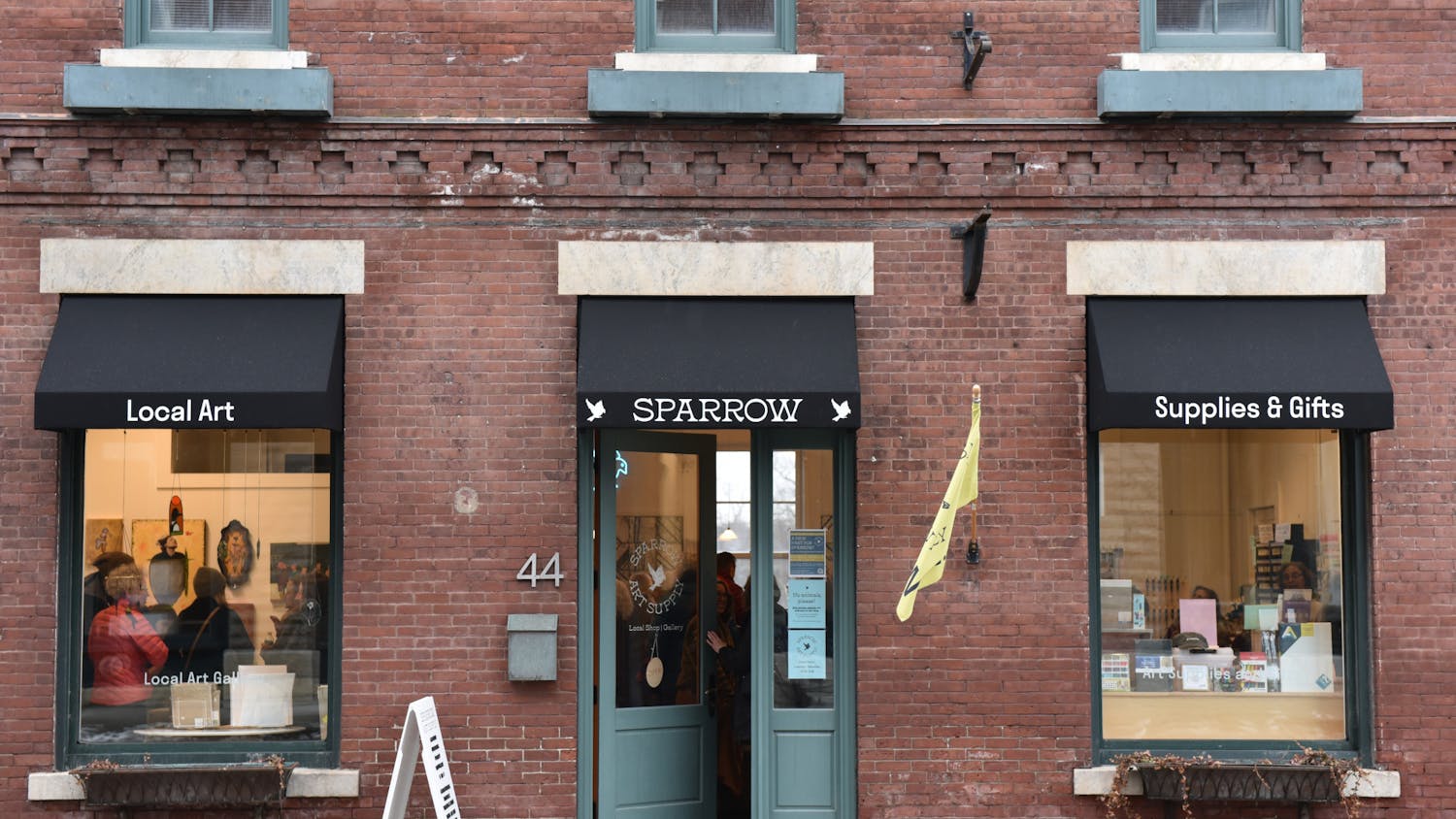Young river birches line McCardell Bicentennial Hall’s Walk of Science, which leads up to one of the building’s second floor entrances. Of the ten famous scientists whose names are engraved into the path’s black tiles, conspicuously, only one – Marie Curie – is female.
The Walk of Science is a stark reminder that not too long ago, women were almost completely excluded from the scientific community. Women faced deeply embedded misogyny, cultural discouragement and stifling gender norms.
Noble Laureate Elizabeth Blackburn tells the all-too-familiar story that when she mentioned her intent to pursue a degree in science to a family friend, the response was, “What’s a nice girl like you doing studying science?”
We often like to think the scientific community has moved beyond anachronistic and prejudicial attitudes toward women, and that our culture celebrates ambitious women pursuing careers in science, technology, engineering and math (STEM). But a large body of evidence points to a darker reality. Progress has been made, but it would be preemptive to congratulate ourselves.
Women remain underrepresented in STEM, and make up only 24 percent of the STEM workforce. In one study, hiring managers were given two copies of the same resume, one with a female name and another with a male name: the hiring managers were less likely to pick the female resume.
Researchers also talk about the persistent “leaky pipeline problem.” Although in many STEM fields a slim majority of undergraduates are women, each progressive stage of training is more male and ultimately only a minority of tenured professors are women. For example, in biology, 52 percent of biology Ph.D.s are women, but only 18 percent are tenured professors.
Scholars list a variety of reasons why women are underrepresented in STEM fields, including discrimination, socialization and gender norms, the demands of child rearing, institutional bias and cultural discouragement as the major proffered factors. A full treatment of the topic is beyond the scope of this article, but recently a new group at the College was formed to discuss these issues and many others that are relevant to women interested in pursuing STEM careers.
The new student club, Women in STEM, was approved by the Constitution Committee last J-term and had its first meeting three weeks ago. Amanda Fishbin ’16 and Perri Silverhart ’16.5, two of the club’s founders, were encouraged to start the club by Professor of Geology Pat Manley.
“The idea of Women in STEM grew out of a few conversations with Pat Manly, who is our advisor and the only female faculty in the department,” Silverhart said. “She’s been in the field since women were first getting into the sciences, and she had a lot of interesting insights about being a woman in a STEM field that we had never thought about much before. She brought up so many different potential topics of conversation that we could use.”
A major focus of Women in STEM will be to foster relationships between female faculty and students, and to stimulate conversations about pursuing STEM careers.
“Female faculty have a variety of stories to share about how they ended up where they are and what their decision making process was along the way,” Silverhart said. “Getting a degree in STEM is one thing, but to actually pursue a career is less common than one might think. Students could also pursue networking opportunities through these relationships.”
Women in STEM recently helped fund Nobel Laureate Carol Greider’s visit to the College, and the group plans on inviting other prominent female scientists to speak on campus in the future. Silverhart would also like to set up a mentorship program with young girls attending elementary school.
“I’ve spoken with the principal of the Weybridge Elementary School and I know she’s interested in starting a program,” Silverhart said. “Ideally we’d set up one-on-one mentorship relationships and do fun, age appropriate introductions to science.”
The group will hopefully prompt discussions about the status of women in science. Silverhart mentioned it is important because women can still face challenges entering STEM fields.
“Part of the reason why I think it’s so important to have these conversations at Midd because sometimes at Midd we live in a bubble,” she said. “Here I feel on a completely equal playing field to my male colleagues in the classroom, and I don’t really notice any institutional bias, but when you look at studies in the real world that bias is very much present.”
The group plans on holding club elections and inviting faculty members to speak at their next meeting on Tuesday, April 14 at 12:30 p.m. in McCardell Bicentennial Hall 104.
Science Spotlight: Women in Stem
Comments



